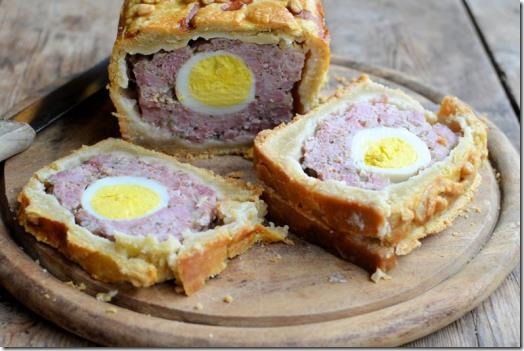
I reckon that Salt Awareness Week ran concurrently with Clueless Week, with participants in the latter generating publicity for the former. While reading a shock-horror story about salt in crumpets, I discovered this MSN news feed on the subject and, as a chemist, immediately realised that those responsible for Salt Awareness Week – some idiots claiming to be ‘doctors’ at treated.com – haven’t got a clue.
As an aside, I bought some of the usual Christmas provisions from Asda this week. One item was a Gala Pie which, for anyone who doesn’t know, is a bit like a pork pie with a hard boiled egg in the middle. I had a slice of it today and I can only describe the taste as something akin to eating cardboard wrapped around raw tofu. In other words, flavourless – and this is purely a result of it having no salt in it.
I’ve written about salt many times before (use the site’s search field to find posts), pointing out that there is no conclusive evidence that salt is bad for you unless you eat a bucket of it a day (and a bucket of spring water would also probably kill you). In most cases, my point has been that taking salt out of food renders it flavourless, since salt is a flavour enhancer.
Current ‘wisdom’ says that you should not eat more than 6g of salt a day (around one teaspoon). Since salt is a chemical compound of sodium and chlorine, and it is the sodium which is the alleged problem, 6g of salt is equivalent to about 2.4g of sodium. But what these ‘experts’ fail to clarify or delve into is that many natural foods contain sodium in the first place. A 100g portion of virtually any fish contains at least a fifth of your daily recommended daily sodium intake (RDA). A similar portion of any cheese contains between a fifth and more than a half of your RDA. Almost any unprocessed food item contains sodium in measurable amounts, so you’re going to get sodium whether you like it or not.
Without getting into the minefield of whether 6g of salt applies just to added salt or all sodium from any source, let’s get back to that Salt Awareness thing. They had identified the top 20 ‘saltiest snacks’ and expressed the results ‘per 100g. Thus, Peperami was no. 2 on the list as having 4.1g of salt. The problem is that a single Peperami only weighs 25g, and that ‘shocking’ figure assumes that you eat four of them.
They also dissed Space Raiders Pickled Onion snacks, at no. 3, for having 3.3g of salt. Except that a single 22g pack of these only contains about 0.6g of salt. You can see how misleading this is.
At no. 14 was Babybel, those little cheese circles you can buy, with 1.8g of salt. A single Babybel weighs 22g, and so contains only 0.4g of salt.
At no. 16 there was the obligatory slur on Heinz’s Tomato Ketchup, also with 1.8g of salt. But a typical serving of ketchup is about the same weight as a Babybel, so again only contains 0.4g of salt.
And my favourite one is Dairylea Cheese Triangles, with 1.7g of salt. A single triangle weighs 17.5g, so you’d have to eat almost the whole pack to be anywhere near 1.7g.
Then there is Hellman’s Mayonnaise, with 1.6g of salt. Except that depending on how you use it, a single serving of Hellman’s can be as little as 10g – or less than 0.2g of salt.
The fact that there are people who are so stupid as to eat ten Peperamis or half a bottle of ketchup in a single sitting is irrelevant. The fact remains that the figures provided are purposely misleading about a subject which no one understands.